Roofing Industry Knowledge | Roofing Terminology
What is a Roof Valley? (And The Material Installed in Roof Valleys)
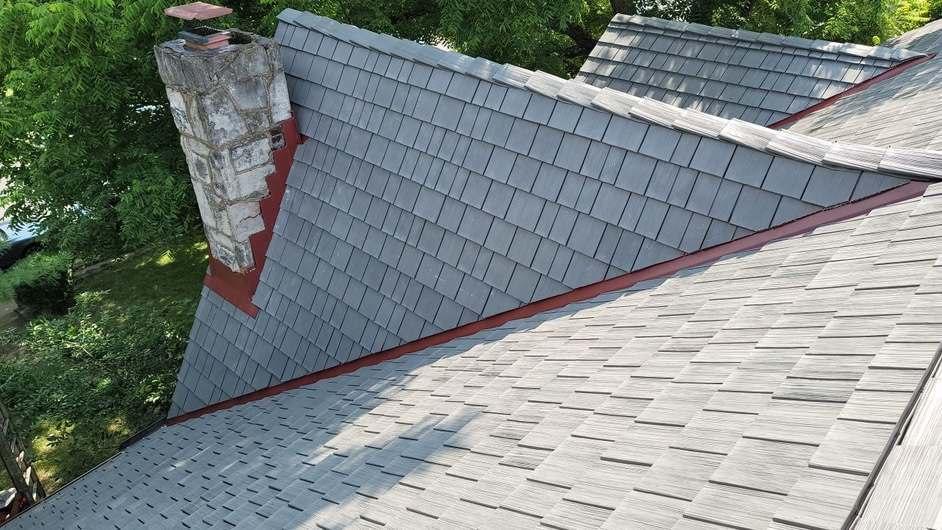
If you ask most people what a valley is, they could most likely give you the right answer. But if you put the word “roof” in front of “valley,” the majority (if not all) of people would have no idea what you’re talking about.
This is understandable, but the truth is that a roof valley is crucial to the functionality of your roof system. And when the time comes for a new roof, or you have a roof leak, you’ll probably hear the term a lot.
So, what exactly is a roof valley? And what do you need to know about it?
For over 30 years, the team at Bill Ragan Roofing has helped homeowners understand everything about their roof. Because of this, I’ll be breaking down the basics of roof valleys.
I’ll start this article by explaining what a roof valley is, what it does on your roof, and the types. After that, you’ll learn the material that needs to be installed to prevent leaks in valleys, which type of valley will be on your roof, and more.
What is a roof valley?
A roof valley is when two roof facets meet at a slope to form an interior angle. The main purpose of roof valleys is to allow water to flow down your roof properly.
There are two common types of roof valleys, open and closed. The names of the valleys pretty much tell you exactly what they are.
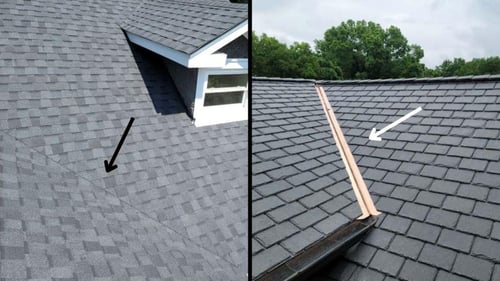 (Left: closed valley, Right: open valley)
(Left: closed valley, Right: open valley)
Open valleys mean they are literally “open,” and there’s no roofing material installed over the valley. On the other hand, closed valleys are “closed” by the roofing material (asphalt shingles) installed over the valley.
No matter what type of roof valley you have, they are an important part of your roof to ensure water gets down to your gutters. But because they are regularly exposed to running water, they need certain materials.
What material is installed in a roof valley to prevent leaks?
Roof valleys are one of the most common roof areas prone to leaks because of the amount of water that flows through them. That’s why both types of roof valleys need the right type of material installed in them to prevent leaks.
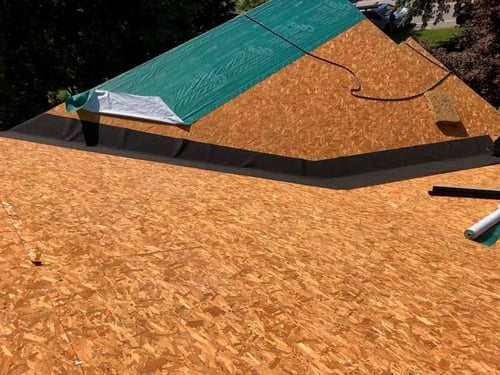 (Ice and water shield installed in roof valley)
(Ice and water shield installed in roof valley)
A closed roof valley needs ice and water shield installed in the valley before installing shingles to close it. This waterproof material protects the roof decking if water gets underneath the shingles that close the valley.
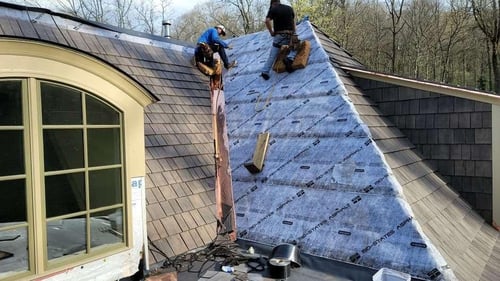 (Copper installed in roof valley)
(Copper installed in roof valley)
On the other hand, an open valley needs metal installed in it. This takes a little more skill because you have to transition the roofing material into the metal flashing that’s installed in the valley.
While you have multiple options, the most common type of metal used in open valleys is prefinished steel. But if you want to add more curb appeal to your roof, copper is a popular option.
At the end of the day, you should have no roof valley problems as long as they have the right material and are correctly installed. But just know neglecting roof valleys can lead to problems (more on that in a minute).
What determines the type of roof valleys your roof has?
Now you know what type of material needs to be installed in each type of roof valley. But do you get to choose the type of roof valley your roof has?
While you do have a personal choice in some cases, the type of roof valley usually comes down to your roofing material. If you have 3-tab or architectural asphalt shingles, you’ll have closed valleys.
However, some homeowners choose open valleys on an architectural asphalt shingle roof from time to time. Just know that getting an open roof valley with metal increases the price of your asphalt roof replacement more than a closed valley with ice and water shield.
But if you have a premium roof system, like cedar shake shingles or synthetic shingles, you’ll definitely have open roof valleys. This is simply because these roofing materials can’t bend to “close” a roof valley.
If you have or want a premium roof system, you’ll have metal in your valleys no matter what. So, it’s important to consider the look of the metal.
If the look isn’t important to you, I recommend the prefinished steel option. But remember, copper is a great choice to raise your roof’s curb appeal.
How does lack of roof maintenance impact roof valleys?
Remember, you shouldn’t have problems in your roof valleys as long as the right material is there and it’s installed correctly. But I often see roof leaks due to neglect from lack of maintenance.
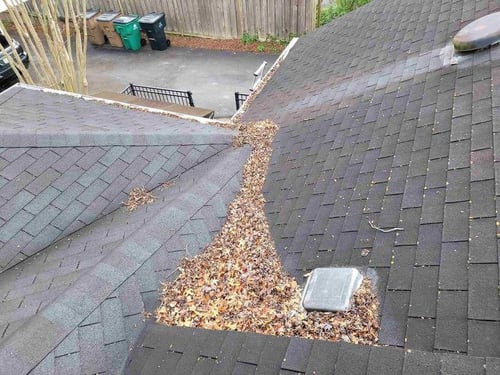
For roof valleys, this comes in the form of sitting debris. Leaving debris (like leaves and sticks) in your roof valleys creates a “dam” that doesn’t allow water to flow down your roof properly.
This causes water to back up and get under the roofing material, leading to leak inside of your home eventually. It’s also a problem when debris becomes saturated and sits in a closed roof valley for prolonged periods of time.
The longer it sits, the more the saturated debris damages the asphalt shingles and shortens their lifespan. Because of this, it’s absolutely crucial to get your roof valleys cleared out as part of roof maintenance.
What are the main parts of a roof system?
Now you know what roof valleys are, the materials needed to prevent leaks, what determines the type your roof has, and how lack of maintenance impacts them. After reading this article, you have a basic understanding of roof valleys.
If that’s all you’re looking for, then great. But just know roof valleys and their materials are just one part of your roof system.
The truth is, there’s so much more than goes into the roof that protects you and your family. That’s why we wrote another article for homeowners starting to learn the basics of roofing by breaking down the main parts of a roof system.
Since 1990, the team at Bill Ragan Roofing has provided high-quality roofing services to thousands of homeowners in Nashville and surrounding Middle Tennessee areas. We take pride in everything we do, from customer service to education to roof installation.
Check out The 9 Main Parts of a Roof (& Other Roofing Terminology to Know) to continue learning about the basis of roofing 101.


